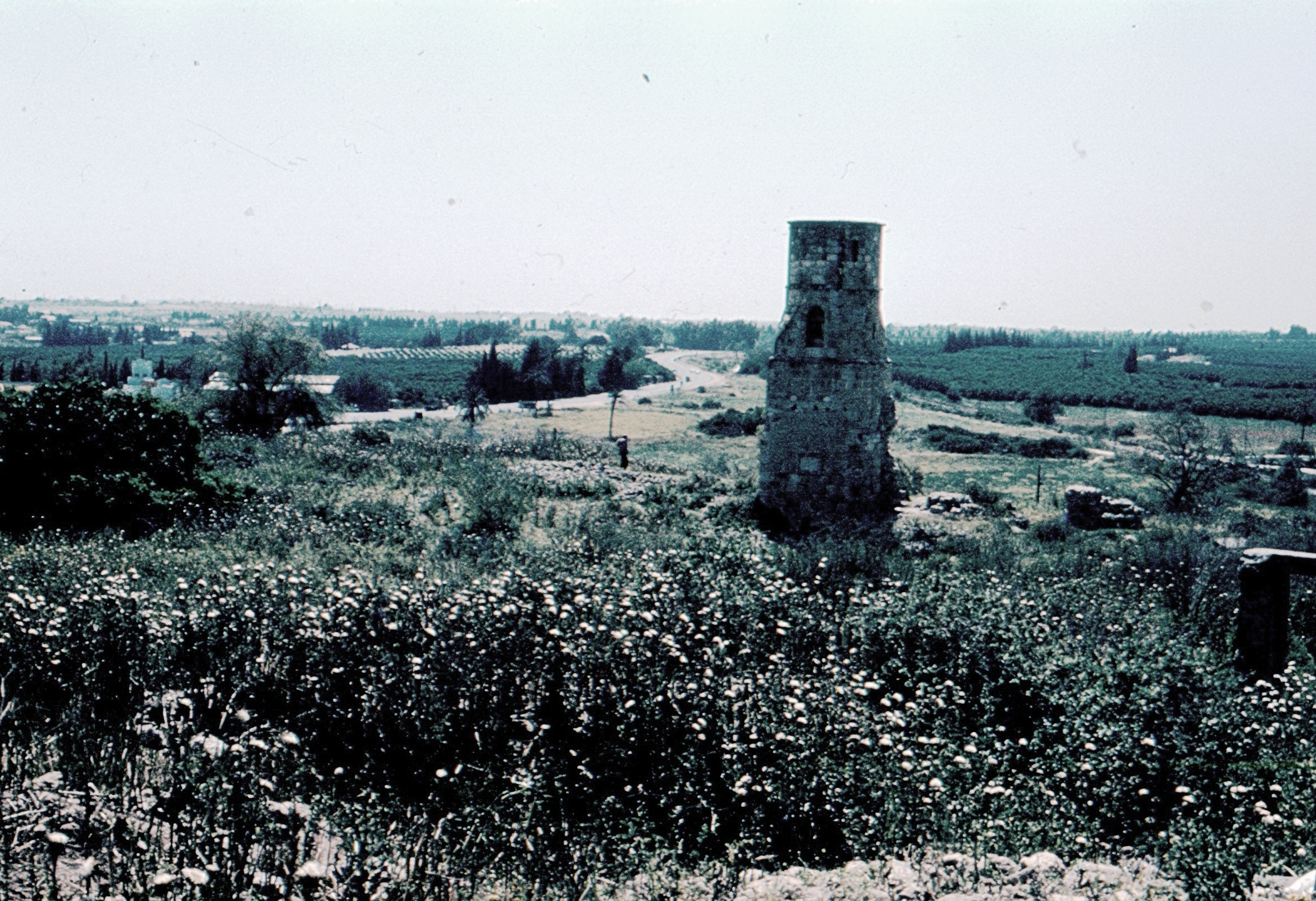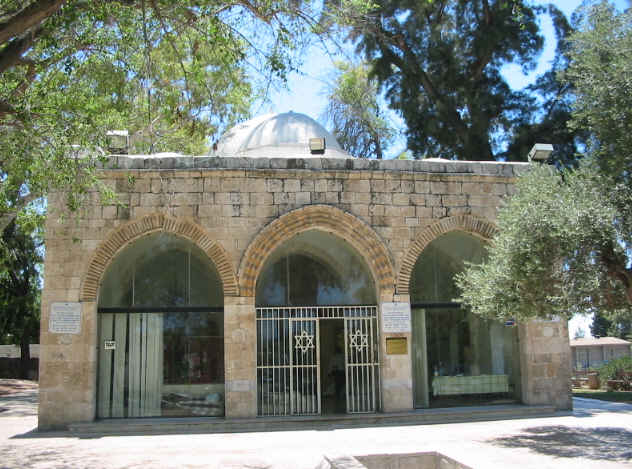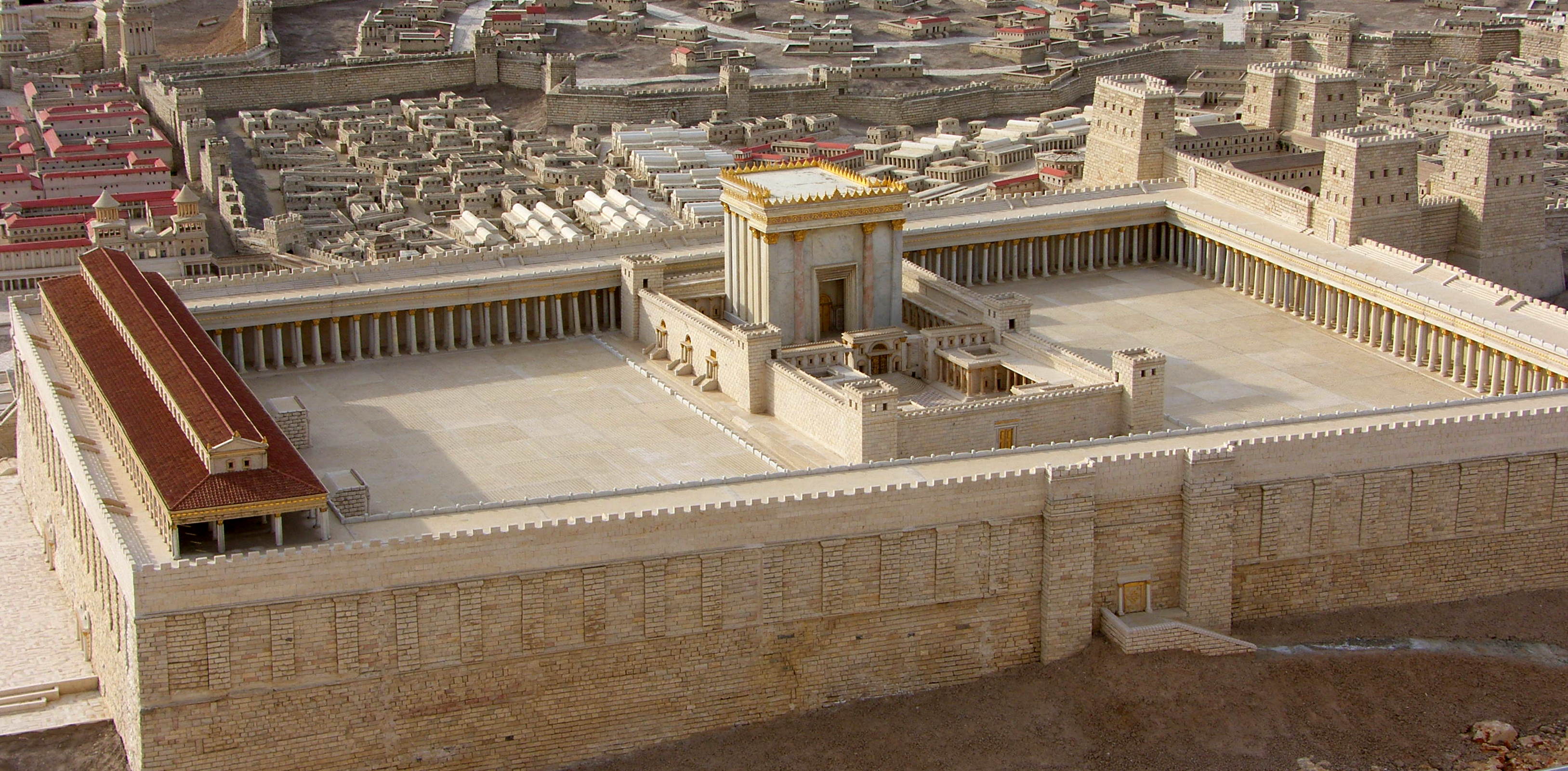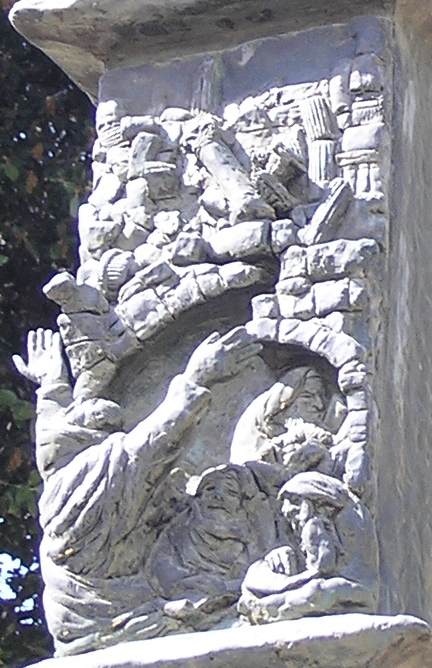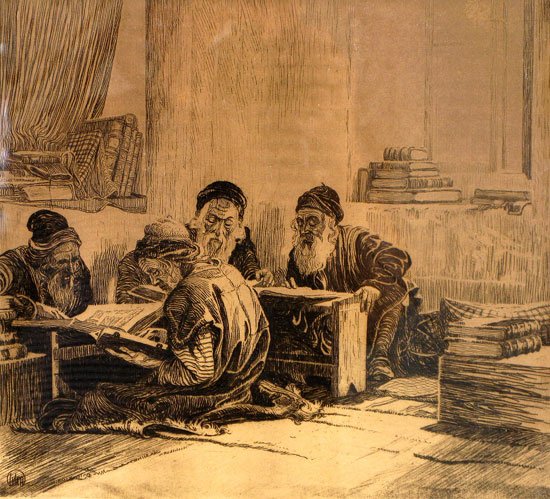|
Yavneh
Yavne () is a city in the Central District of Israel. In 2022, it had a population of 56,232. Modern Yavne was established in 1949. It is located near the ruins of the ancient town of Yibna (known also as Jamnia and Jabneh), later the village of Yibna, and today the archeological site of Tel Yavne. Ancient Yavne holds a special place in Jewish history because of the ancient town's contribution to Judaism's recovery and reconstitution under sages ben Zakkai and Gamaliel II following the destruction of the Second Temple. This period, sometimes known as the "Yavne period", became a crucial mark in the development of Rabbinic Judaism. The city has a history of producing wine throughout much of antiquity, as indicated by both archeological findings and ancient sources. Name In many English translations of the Bible, Yavne was known as Jabneh . In Greek and Latin-speaking sources, it was known as Jamnia ( ''Iamníā''; ). Under Late Roman and Byzantine rule, it had a mixed popul ... [...More Info...] [...Related Items...] OR: [Wikipedia] [Google] [Baidu] |
Yibna
Yibna (; ''Jabneh'' or ''Jabneel'' in Biblical times; ''Jamnia'' in Roman empire, Roman times; ''Lordship of Ibelin, Ibelin'' to the Crusades, Crusaders), or Tel Yavne, is an archaeological site and List of villages depopulated during the Arab–Israeli conflict, depopulated Palestinian town. The ruins are located southeast of the modern Israeli city of Yavne. The town had a population of 5,420 in 1948, located 15 kilometers southwest of Ramla.Khalidi, 1992, p.421 Most of the population fled after the fall of al-Qubayba, Hebron, al-Qubeiba and Zarnuqa in late May, but armed males were forced back. Israeli army took the town on June 5 and expelled the remaining population. It is a significant site for post-biblical Jewish history, as it was the location of the Council of Jamnia, considered the birthplace of modern Rabbinic Judaism. It is also significant in the history of the Crusades, as the location of the House of Ibelin. Name In many English translations of the Bible, it is k ... [...More Info...] [...Related Items...] OR: [Wikipedia] [Google] [Baidu] |
Gamaliel II
Rabban Gamaliel II (also spelled Gamliel; ; before –) was a rabbi from the second generation of tannaim. He was the first person to lead the Sanhedrin as '' nasi'' after the fall of the Second Temple in 70 CE. He was the son of Shimon ben Gamaliel, one of Jerusalem's foremost men in the war against the Romans, and grandson of Gamaliel I. To distinguish him from the latter he is also called Gamliel of Yavne. Biography He seemed to have settled initially in Kefar 'Othnai in Lower Galilee, but with the outbreak of the war with Rome, he fled to Jerusalem. From there, he moved to Yavne. In Yavne, during the siege of Jerusalem, the scribes of the school of Hillel had taken refuge by permission of Vespasian, and a new centre of Judaism arose under the leadership of the aged Johanan ben Zakkai, a school whose members inherited the authority of the Sanhedrin of Jerusalem. He was appointed ''nasi'' in approximately the year 80 CE. Leadership Gamaliel II became Johanan ben Zak ... [...More Info...] [...Related Items...] OR: [Wikipedia] [Google] [Baidu] |
Jewish History
Jewish history is the history of the Jews, their Jewish peoplehood, nation, Judaism, religion, and Jewish culture, culture, as it developed and interacted with other peoples, religions and cultures. Jews originated from the Israelites and Hebrews of historical History of ancient Israel and Judah, Israel and Judah, two related kingdoms that emerged in the Levant during the Iron Age.The Pitcher Is Broken: Memorial Essays for Gosta W. Ahlstrom, Steven W. Holloway, Lowell K. Handy, Continuum, 1 May 1995 Quote: "For Israel, the description of the battle of Qarqar in the Kurkh Monolith of Shalmaneser III (mid-ninth century) and for Judah, a Tiglath-pileser III text mentioning (Jeho-) Ahaz of Judah (IIR67 = K. 3751), dated 73 ... [...More Info...] [...Related Items...] OR: [Wikipedia] [Google] [Baidu] |
Siege Of Jerusalem (70 AD)
The siege of Jerusalem in 70 CE was the decisive event of the First Jewish–Roman War (66–73 CE), a major rebellion against Roman rule in the province of Judaea. Led by Titus, Roman forces besieged the Jewish capital, which had become the main stronghold of the revolt. After months of fighting, they breached its defenses, destroyed the Second Temple, razed most of the city, and killed, enslaved, or displaced a large portion of its population. The fall of Jerusalem marked the effective end of the Jewish revolt and had far-reaching political, religious, and cultural consequences. In the winter of 69/70 CE, following a pause caused by the Roman succession war, the campaign in Judaea resumed as Titus led at least 48,000 troops—including four legions and auxiliary forces—back into the province. By spring, this army had encircled Jerusalem, whose population had surged with refugees and Passover pilgrims. Inside the city, rival factions led by John of Gischala, Simon ba ... [...More Info...] [...Related Items...] OR: [Wikipedia] [Google] [Baidu] |
Yohanan Ben Zakkai
Yohanan ben Zakkai (; 1st century CE), sometimes abbreviated as for Rabbi Yohanan ben Zakkai, was a tanna, an important Jewish sage during the late Second Temple period during the transformative post-destruction era. He was a primary contributor to the core text of Rabbinic Judaism, the Mishnah. His name is often preceded by the honorific title '' Rabban''. He is widely regarded as one of the most important Jewish figures of his time, and his escape from the Roman destruction of Jerusalem (which allowed him to continue teaching) may have been instrumental in Rabbinic Judaism's survival post-Temple. His tomb is located in Tiberias within the Maimonides burial compound. Yohanan was the first Jewish sage attributed the title of rabbi in the Mishnah. Life The Talmud reports that, in the mid-first century, he was particularly active in opposing the interpretations of Jewish law (''Halakha'') by the Sadducees and produced counter-arguments to their objections to the interp ... [...More Info...] [...Related Items...] OR: [Wikipedia] [Google] [Baidu] |
Tannaim
''Tannaim'' ( Amoraic Hebrew: תנאים "repeaters", "teachers", singular ''tanna'' , borrowed from Aramaic) were the rabbinic sages whose views are recorded in the Mishnah, from approximately 10–220 CE. The period of the Tannaim, also referred to as the Mishnaic period, lasted about 210 years. It came after the period of the Zugot "Pairs" and was immediately followed by the period of the Amoraim "Interpreters". The root ''tanna'' () is the Aramaic equivalent of the Hebrew root ''shanah'' (), which also is the root word of ''Mishnah''. The verb ''shanah'' means "to repeat hat one was taught and is used to mean "to learn". The Mishnaic period is commonly divided into five periods according to generations. There are approximately 120 known Tannaim. The Tannaim lived in several areas of the Land of Israel. The spiritual center of Judaism at that time was Jerusalem, but after the destruction of the city and the Second Temple, Yohanan ben Zakkai and his students founded a n ... [...More Info...] [...Related Items...] OR: [Wikipedia] [Google] [Baidu] |
Rabbinic Judaism
Rabbinic Judaism (), also called Rabbinism, Rabbinicism, Rabbanite Judaism, or Talmudic Judaism, is rooted in the many forms of Judaism that coexisted and together formed Second Temple Judaism in the land of Israel, giving birth to classical rabbinic Judaism, which flourished from the 1st century CE to the final redaction of the Babylonian Talmud in c. 600. Mainly developing after the destruction of the Jerusalem Temple (70 CE), it eventually became the normative form of Judaism. Rabbinic Judaism has been an orthodox form of Judaism since the 6th century CE, after the codification of the Babylonian Talmud. It has its roots in the Pharisaic school of Second Temple Judaism and is based on the belief that Moses at Mount Sinai received both the Written Torah (''Torah she-be-Khetav'') and the Oral Torah (''Torah she-be-al Peh'') from God. The Oral Torah explains the Written Torah, and it was the rabbis claimed that it was them who possessed this memorized and orally transmitte ... [...More Info...] [...Related Items...] OR: [Wikipedia] [Google] [Baidu] |
House Of Ibelin
The House of Ibelin was a noble family in the Crusader Kingdom of Jerusalem in the 12th century. They rose from relatively humble beginnings to become one of the most important families in the kingdom, holding various high offices and with extensive holdings in the Holy Land and Cyprus. The family disappeared after the fall of the Kingdom of Cyprus in the 15th century. Name The family took their name from the Ibelin (castle), castle of Ibelin, which was built in 1141 by King Fulk I of Jerusalem, Fulk I and entrusted to Barisan of Ibelin, Barisan, the founder of the family. ''Ibelin'' was the crusader's name for the Arab city of Yibna, where the castle was situated. The castle fell to the Saracens at the end of the 12th century, but by then the family had holdings at Lordship of Beirut, Beirut and in Kingdom of Cyprus, Cyprus. First and second family generations The Ibelin family rose from relatively humble origins to become one of the most important noble families in the Crusad ... [...More Info...] [...Related Items...] OR: [Wikipedia] [Google] [Baidu] |
Tel Yavne
TEL or Tel may refer to: Businesses and organisations * Tokyo Electron, a semiconductor equipment manufacturer * TE Connectivity, a technology company, NYSE stock ticker TEL * The European Library, an Internet service Place names * Tel, Azerbaijan * Tel River, in Orissa, India Science and technology * Technology-Enhanced Learning * Tetraethyllead, a gasoline additive to make leaded gasoline * ETV6, previously known as TEL, a gene * Transporter erector launcher, a mobile missile launch platform * Tolman electronic parameter, a property of ligands * tel, a URI scheme for telephone numbers * .tel, an internet top-level domain * tel, a parameter in the hCard microformat Other uses * Tell (archaeology), or tel, a type of archaeological mound created by human occupation * Test of Economic Literacy, a standardized test of economics * Thomson–East Coast MRT line, a mass rapid transit line in Singapore * Telescopium, a minor constellation in the southern celestial hemisphere * T ... [...More Info...] [...Related Items...] OR: [Wikipedia] [Google] [Baidu] |
List Of Cities In Israel
This article lists the 73 localities in Israel that the Ministry of Interior (Israel), Israeli Ministry of Interior has designated as a City council (Israel), city council. It excludes the 4 List of Israeli settlements with city status in the West Bank, Israeli settlements in the West Bank designated as cities, but Israeli occupation of the West Bank, occupied East Jerusalem is included within Jerusalem. The list is based on the current index of the Israel Central Bureau of Statistics (CBS). Within Local government in Israel, Israel's system of local government, an urban municipality can be granted a city council by the Interior Ministry when its population exceeds 20,000. The term "city" does not generally refer to Local council (Israel), local councils or urban agglomerations, even though a defined city often contains only a small portion of an urban area or metropolitan area's population. List As for 2022, Israel has 18 cities with populations over 100,000, including Jeru ... [...More Info...] [...Related Items...] OR: [Wikipedia] [Google] [Baidu] |
Samaritans
Samaritans (; ; ; ), are an ethnoreligious group originating from the Hebrews and Israelites of the ancient Near East. They are indigenous to Samaria, a historical region of History of ancient Israel and Judah, ancient Israel and Judah that comprises the northern half of what is the West Bank in Palestine. They are adherents of Samaritanism, an Abrahamic religions, Abrahamic, monotheistic, and ethnic religion that developed alongside Judaism. According to their tradition, the Samaritans are descended from the Israelites who, unlike the Ten Lost Tribes of the Twelve Tribes of Israel, were not subject to the Assyrian captivity after the northern Kingdom of Israel (Samaria), Kingdom of Israel was destroyed and annexed by the Neo-Assyrian Empire around 720 BCE. Regarding the Samaritan Pentateuch as the unaltered Torah, the Samaritans view the Jews as close relatives but claim that Judaism fundamentally alters the original Yahwism, Israelite religion. The most notable theological ... [...More Info...] [...Related Items...] OR: [Wikipedia] [Google] [Baidu] |

